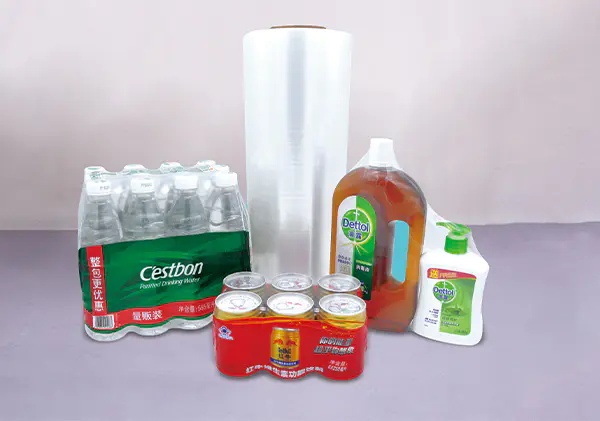Crosslinked shrink film has emerged as a pivotal material in modern packaging and industrial applications. Unlike conventional shrink films, crosslinked variants undergo a chemical or radiation process that links polymer chains, transforming ordinary plastic into a high-performance material. This crosslinking process enhances mechanical strength, heat resistance, barrier properties, and optical clarity, making these films essential for protecting products during transport, storage, and display.
The importance of crosslinked shrink film extends beyond simple protection. In the food industry, it preserves freshness and extends shelf life. For consumer goods, it ensures secure packaging while maintaining a visually appealing presentation. In industrial and logistics contexts, it stabilizes palletized loads and prevents product damage. Compared with non-crosslinked films, crosslinked shrink films provide superior tear resistance, higher shrink force, and better dimensional stability, offering both functional and aesthetic advantages.
Crosslinking is a chemical or physical process that creates bonds between polymer chains in a film. These bonds form a three-dimensional network structure that enhances the material's thermal, mechanical, and chemical properties. Two main crosslinking techniques are commonly used:
Crosslinking fundamentally changes the properties of the film, improving shrink performance, strength, and durability while maintaining flexibility.
Crosslinked shrink films possess a unique combination of characteristics that differentiate them from conventional shrink films:
| Property | Key Feature | Benefit |
|---|---|---|
| Mechanical | High tensile strength, elongation, and impact resistance | Reduces tearing and puncturing during transport |
| Thermal | Stable heat tolerance, controlled shrink temperature | Ensures uniform shrink and packaging performance |
| Barrier | Resistance to moisture, gases, and chemicals | Extends product shelf life and maintains quality |
| Optical | High clarity, gloss, and shrink ratio | Improves retail display and consumer appeal |
These properties allow crosslinked shrink films to perform under demanding conditions, from food packaging at sub-zero temperatures to industrial pallet wrapping in high-temperature warehouses.
Different crosslinked shrink films are designed to meet specific application requirements:
Producing high-quality crosslinked shrink films begins with careful polymer selection. Additives such as stabilizers, slip agents, and anti-blocking agents are incorporated to enhance performance:
Material selection also considers environmental compliance, especially for food-grade or recyclable films.
Crosslinked shrink films are produced through blown or cast extrusion methods:
Thickness uniformity is critical; uneven films may shrink inconsistently, compromising product protection and appearance.
After extrusion, films undergo crosslinking to enhance performance:
These methods determine the film's shrink force, puncture resistance, and thermal stability.
After crosslinking, films are rolled, cut, and inspected. Standard testing includes:
Rigorous quality control ensures that each roll of film meets industry standards.
Crosslinked shrink films are distinguished by a combination of performance properties that make them superior to conventional films. These characteristics stem directly from the crosslinking process, material selection, and design of multi-layer structures. The main functional aspects include shrink performance, mechanical strength, optical clarity, printability, and compliance with safety standards.
Shrink performance is the most defining feature of crosslinked shrink films. It refers to the film's ability to contract tightly around a product when heat is applied. Key factors include:
Design Insight: Engineers select polymer blends and crosslinking methods to achieve a balance between shrink ratio, force, and flexibility. This ensures the film wraps tightly without damaging delicate products.
Durability is a critical functional characteristic, particularly in industrial and pallet packaging. Crosslinked shrink films demonstrate:
Design Insight: Multi-layer film structures can be engineered to optimize strength in specific directions—longitudinal for machine processing, transverse for load stability—ensuring protection without excessive material use.
Crosslinked shrink films combine functional strength with visual appeal, which is crucial in consumer-facing packaging:
Design Insight: Optical clarity is often enhanced by co-extruding multiple layers or adding anti-fog coatings, particularly for food packaging, to prevent condensation from obscuring the product.
Modern packaging often requires branding and information to be printed directly on the shrink film:
Design Insight: Crosslinked films are engineered so that printing does not compromise shrink performance or mechanical properties. The outer layer must maintain adhesion and clarity, while the inner layer preserves food-grade or chemical resistance standards.
Safety is a fundamental consideration, particularly for food, pharmaceutical, and medical applications:
Design Insight: Manufacturers carefully select polymers and crosslinking methods to meet both regulatory requirements and functional performance. This ensures that shrink films remain safe, durable, and effective under all intended usage conditions.
Crosslinked shrink films extend freshness, provide tamper evidence, and preserve aesthetic appeal for meat, poultry, seafood, cheese, and bakery items. The films' barrier properties prevent moisture loss, oxidation, and contamination.
High clarity, puncture resistance, and secure shrink make these films ideal for electronics, cosmetics, toys, and household goods. They offer anti-theft advantages and enhance shelf presentation.
Crosslinked films are widely used for pallet stabilization, heavy-load wrapping, and logistics. Their high shrink force and tear resistance reduce product movement and damage during shipment, providing cost-efficient protection.
Specialty films are used for pharmaceutical packaging, delicate electronics, and cold-chain products. Multi-layer or coated films offer high barrier properties, thermal stability, and visual clarity.
Crosslinked shrink films are increasingly designed with sustainability in mind. Life cycle analyses show that stronger, high-performance films often reduce overall material usage. Energy-efficient production techniques and recycling initiatives minimize environmental impact. Innovations include biodegradable additives and fully recyclable films, balancing performance with environmental responsibility.
JT Package provides high-quality crosslinked shrink films suitable for a wide range of packaging applications. Each product undergoes rigorous quality control to ensure consistent shrink performance, clarity, and durability. Our focus on material selection, precise crosslinking, and sustainable production allows clients to package their products safely and attractively.
With years of industry experience, JT Package offers customized solutions, including tailored film thickness, multi-layer options, and food-grade certification. By prioritizing both performance and environmental responsibility, we help businesses achieve high quality packaging results while maintaining efficiency and sustainability.